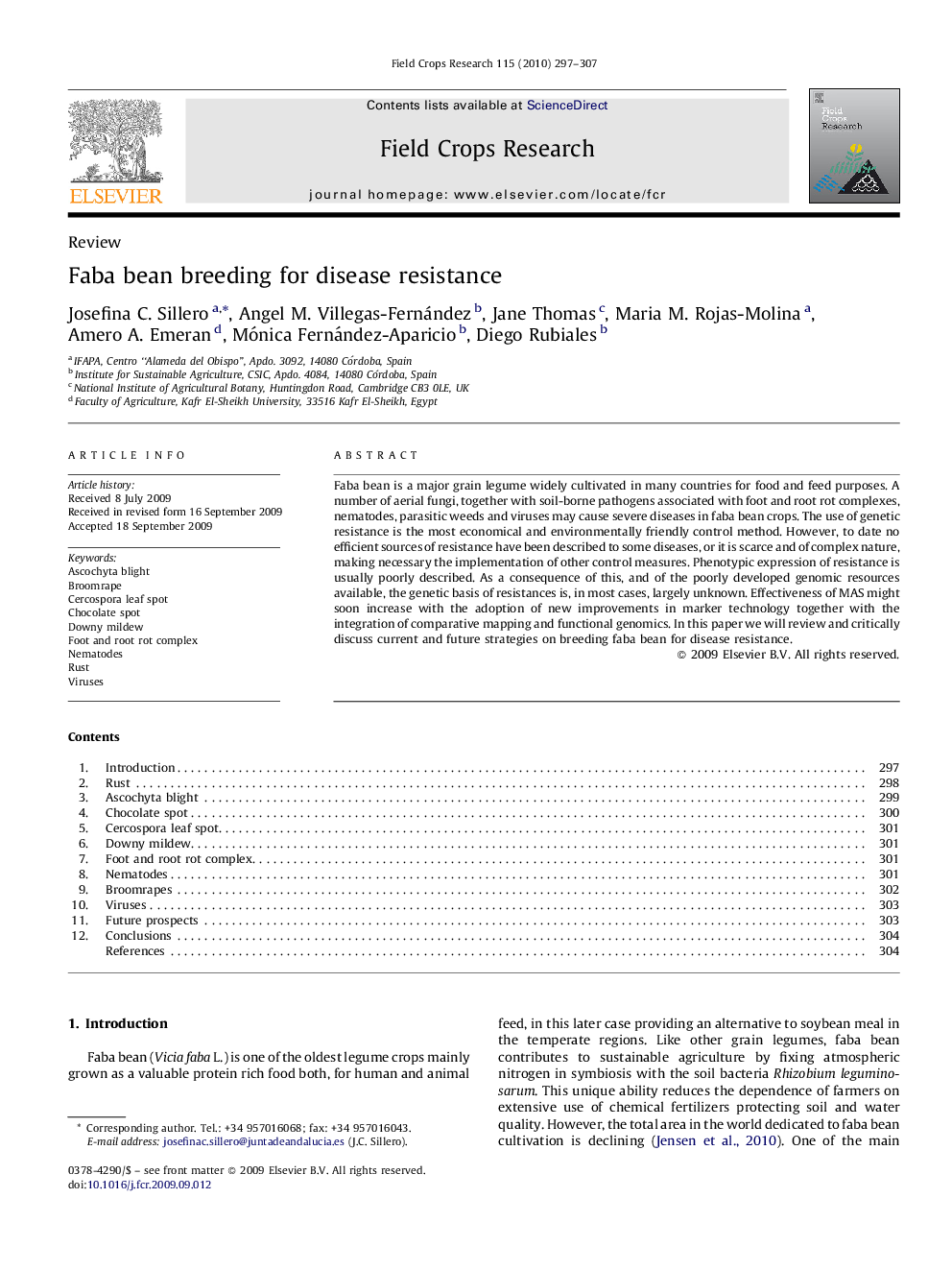| Article ID | Journal | Published Year | Pages | File Type |
|---|---|---|---|---|
| 4511026 | Field Crops Research | 2010 | 11 Pages |
Faba bean is a major grain legume widely cultivated in many countries for food and feed purposes. A number of aerial fungi, together with soil-borne pathogens associated with foot and root rot complexes, nematodes, parasitic weeds and viruses may cause severe diseases in faba bean crops. The use of genetic resistance is the most economical and environmentally friendly control method. However, to date no efficient sources of resistance have been described to some diseases, or it is scarce and of complex nature, making necessary the implementation of other control measures. Phenotypic expression of resistance is usually poorly described. As a consequence of this, and of the poorly developed genomic resources available, the genetic basis of resistances is, in most cases, largely unknown. Effectiveness of MAS might soon increase with the adoption of new improvements in marker technology together with the integration of comparative mapping and functional genomics. In this paper we will review and critically discuss current and future strategies on breeding faba bean for disease resistance.
